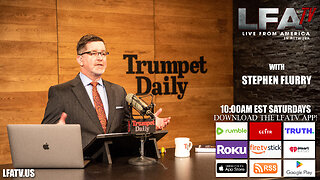Cantata BWV 195, Dem Gerechten muß das Licht - Johann Sebastian Bach 'Helmuth Rilling'
Composition Year: 1727-31 (lost, 1st Version)
First Performance: 1727-32? in Leipzig (1st Performance)
Dedication: Wedding
Recorded: Gedächtniskirche Stuttgart, Oktober 1983/Februar 1984.
~
Performers:
Shihomi Inoue-Heller – Soprano • Elisabeth Graf – Alto • Oly Pfaff – Tenore • Andreas Schmidt – Basso
~
Johannes Ritzkowsky, Bruno Schneider – Corno • Bernhard Schmid, Josef Hausberger, Roland Gurkhardt – Tromba • Peter Wirweitzki – Timpani
Sibylle Keller-Sanwald, Peter Schlenker, Wiltrud Böckheler – Flauto • Günther Passin, Hedda Rothweiler – Oboe, Oboe d’amore • Kurt Etzold – Fagotto • Georg Egger – Violino • Stefan Trauer – Violoncello • Claus Zimmermann – Contrabbasso • Hans- Joachim Erhard – Organo, Cembalo
~
Gächinger Kantorei Stuttgart • Württembergisches Kammerorchester Heilbronn • Helmuth Rilling - Conductor
~
Prima Parte
00:01 1. Chorus: Dem Gerechten muss das Licht immer wieder aufgehen
04:47 2. Recitative (bass): Dem Freudenlicht gerechter Frommen
06:07 3. Aria (bass): Rühmet Gottes Güt und Treu
10:45 4. Recitative (soprano): Wohlan, so knüpfet denn ein Band
11:59 5. Chorus: Wir kommen, deine Heiligkeit
Seconda Parte
18:36 6. Chorale: Nun danket all und bringet Ehr
~
Work:
Dem Gerechten muß das Licht (The light shall [ever rise again] for the righteous), BWV 195, is a church cantata by Johann Sebastian Bach for a wedding. He composed it in Leipzig, possibly in 1727, but only the incomplete scores of later performances from the 1740s survived. It uses two verses from Psalm 97 for the opening movement, and the first stanza auf Paul Gerhardt's hymn "Nun danket all und bringet Ehr" for the closing chorale. The librettist of the other movements is unknown.
~
History and text
Bach composed this cantata in Leipzig around 1727 for a wedding. The earliest version of the work is lost; an incomplete second version from 1742 and a complete revision from the late 1740s survive. These dates correspond with repeat performances of the work.
The closing chorale is the first stanza of Paul Gerhardt's hymn "Nun danket all und bringet Ehr", with the melody of "Lobt Gott, ihr Christen alle gleich". The opening movement is based on Psalms 97:11-12; the rest of the text is anonymous. Alfred Dürr derives from allusions in the text that the work was intended for the wedding of a lawyer.
~
Bach Cantatas website: https://www.bach-cantatas.com/
~
ATTRIBUTION
Music contained in this video is licensed to, Hänssler-Verlag, Germany
-
 1:28:57
1:28:57
The Charlie Kirk Show
3 hours agoTHOUGHTCRIME Ep. 44 — Is Doxxing Dead? Poo-Loving Libs? The Truth About Pearl Harbor?
30.1K51 -
 1:18:32
1:18:32
Kim Iversen
5 hours agoBig Pharma Hopes For Another Cash Cow Vaccine With Bird Flu GAIN OF FUNCTION Research
30K93 -
 LIVE
LIVE
Melonie Mac
7 hours agoGo Boom Live Ep 4!
2,552 watching -
 1:11:58
1:11:58
Precision Rifle Network
1 day agoGuns & Grub S2E4
9.91K1 -
 58:42
58:42
The Anthony Rogers Show
10 hours agoEpisode 312 - Steve Farrell
7.83K2 -
 54:46
54:46
LFA TV
17 hours agoDemocrats’ Unhinged 2024 Campaign Plan: ‘Get Trump’ by Whatever Means Possible| Trumpet Daily 5.16.24 9pm EST
18.5K8 -
 1:56:35
1:56:35
Donald Trump Jr.
10 hours agoThe Swamp Runs Deep but Thankfully Senator JD Vance is Standing in Their Way | TRIGGERED Ep.137
104K193 -
 1:11:20
1:11:20
The Late Kick with Josh Pate
4 hours agoLate Kick Live Ep 513: ACC Implosion Ahead | SEC QB Ratings | Dabo vs The Portal | Big Ten Snapshot
17.3K4 -
 2:03:15
2:03:15
The Quartering
7 hours agoCrowder Exposes Woke Military, 2 Video Games DEI Insanity Leak, Religious NFL Player Cancelled
62.1K44 -
 2:25:40
2:25:40
ThatStarWarsGirl
6 hours agoTSWG LIVE: Unboxing P.O. Box Presents!
31.2K13